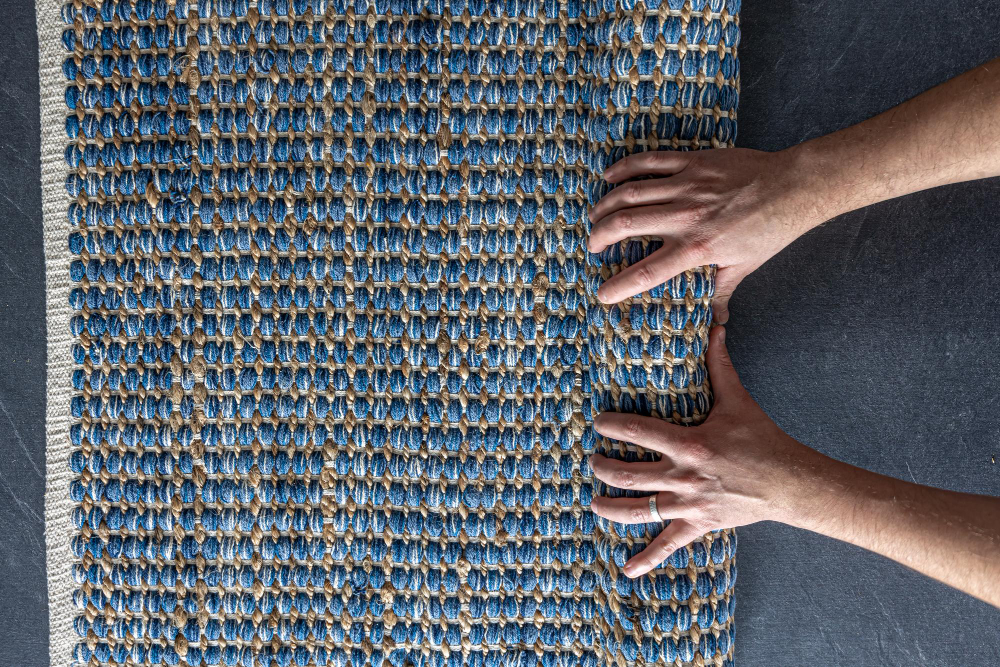Hand-Knotted vs. Hand-Tufted Rugs: Your Complete Guide

Shopping for a new rug can feel overwhelming with so many options available. Two terms you'll frequently encounter are "hand-knotted" and "hand-tufted" rugs. While both are handcrafted, they differ significantly in construction, durability, and price.
Understanding these differences will help you make an informed decision that aligns with your budget, lifestyle, and aesthetic preferences. Whether you're furnishing a high-traffic living room or adding elegance to a formal dining space, knowing which type of rug suits your needs is essential.
What Are Hand-Knotted Rugs?
Hand-knotted rugs represent the pinnacle of traditional rug-making craftsmanship. Artisans create these rugs by individually tying knots around the warp threads that form the rug's foundation. Each knot is carefully placed and secured, creating the pile that forms the rug's surface.
The process requires exceptional skill and patience. A skilled weaver can tie approximately 10,000 knots per day, meaning a medium-sized rug with 300,000 knots takes about a month to complete. Larger, more intricate pieces can take several months or even years to finish.
Construction Process
The creation begins with setting up vertical warp threads on a loom. Artisans then tie individual knots around pairs of these threads, row by row. After completing each row, they beat down the knots with a comb-like tool to ensure tight, even spacing. This meticulous process creates the rug's distinctive texture and ensures long-lasting durability.
Key Characteristics
Hand-knotted rugs have several distinguishing features. The back typically shows the same pattern as the front, though in reverse. You'll notice slight irregularities in the pattern and fringe that extends naturally from the rug's foundation rather than being sewn on separately.
What Are Hand-Tufted Rugs?
Hand-tufted rugs use a different construction method that's faster and less labor-intensive than hand-knotting. Artisans use a tufting gun to push yarn through a pre-drawn canvas backing, creating loops that form the rug's pile.
This technique allows for more varied textures and patterns while maintaining the handmade quality that many homeowners desire. The process combines traditional craftsmanship with modern efficiency.
Construction Process
The process starts with stretching a canvas foundation on a frame. Artisans trace the design onto this canvas, then use a specialized tool to punch yarn through from the back. The loops created on the front surface can be cut for a plush finish or left intact for a looped texture.
Once the tufting is complete, latex backing secures the yarns in place. Finally, an additional fabric backing provides extra stability and a finished appearance.
Key Characteristics
Hand-tufted rugs have a canvas backing rather than the foundation threads visible in hand-knotted pieces. The fringe, if present, is typically sewn on after construction. These rugs often feature varied pile heights and textures that create visual interest and dimension.
Comparing Durability and Longevity
Durability represents one of the most significant differences between these two types of rugs. Hand-knotted rugs can last for generations with proper care. Their individual knot construction means that even if some areas wear down, the overall structure remains intact.
Hand-tufted rugs generally last 10-20 years depending on quality and care. The latex backing can deteriorate over time, especially in high-humidity environments. However, they still offer excellent value for their lifespan when properly maintained.
Design and Pattern Considerations
Hand-knotted rugs excel at intricate, detailed patterns. The individual knot placement allows for precise geometric designs and complex motifs that have been passed down through generations of weavers.
Hand-tufted rugs offer more flexibility in design and texture. Artisans can create raised patterns, varied pile heights, and contemporary designs that might be challenging or impossible with traditional knotting techniques.
Price Differences and Value
Hand-knotted rugs command higher prices due to the time, skill, and materials required for their creation. A quality piece represents a significant investment but offers exceptional longevity and often appreciates in value over time.
Hand-tufted rugs provide an accessible entry point into handmade rug ownership. They offer the aesthetic appeal of handcrafted pieces at a more moderate price point, making them attractive for budget-conscious buyers who still want quality and style.
Maintenance and Care Requirements
Both types require regular maintenance to preserve their appearance and extend their lifespan. Hand-knotted rugs benefit from professional cleaning every few years and should be rotated periodically to ensure even wear patterns.
Hand-tufted rugs need similar care but may require more frequent professional attention due to their latex backing. Avoid excessive moisture, which can damage the adhesive backing and cause delamination.
Making the Right Choice for Your Space
Consider your specific needs when choosing between hand-knotted and hand-tufted rugs. High-traffic areas benefit from the superior durability of hand-knotted pieces, while hand-tufted rugs work well in bedrooms or formal spaces with lighter use.
Budget constraints often influence the decision. Hand-tufted rugs allow you to enjoy handmade quality without the premium price of hand-knotted pieces.
Think about your long-term plans as well. If you're furnishing a forever home, investing in hand-knotted rugs makes sense. For shorter-term living situations, hand-tufted options provide flexibility without major financial commitment.
Find Your Perfect Rug Today
Both hand-knotted and hand-tufted rugs offer unique benefits depending on your needs, preferences, and budget. Hand-knotted pieces provide unmatched durability and traditional craftsmanship, while hand-tufted rugs deliver handmade quality at accessible prices.
The key lies in understanding your specific requirements and choosing accordingly. Consider factors like room usage, traffic patterns, design preferences, and long-term plans when making your decision.
If you're looking for a rug store in Scottsdale, AZ, contact Organic Looms today for more information. Their experienced team can help you explore both hand-knotted and hand-tufted options to find the perfect piece for your home.